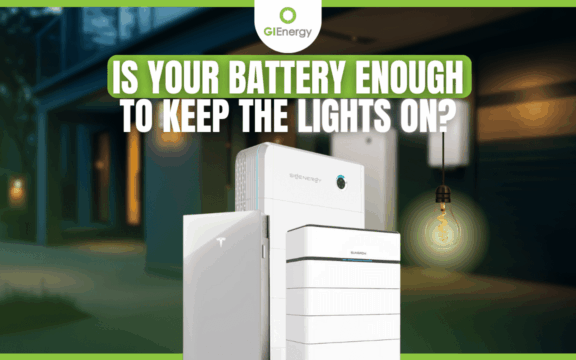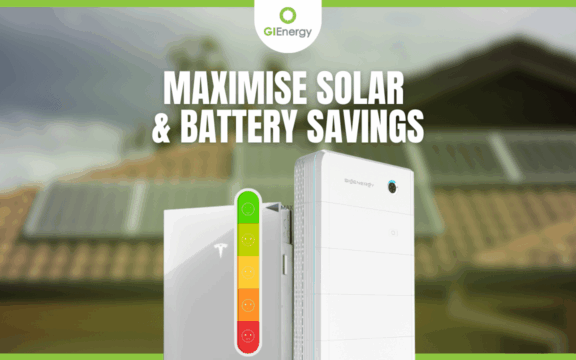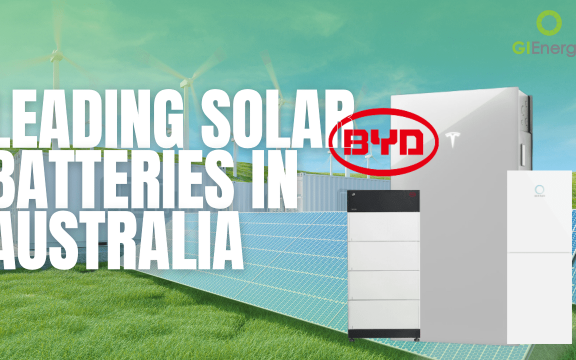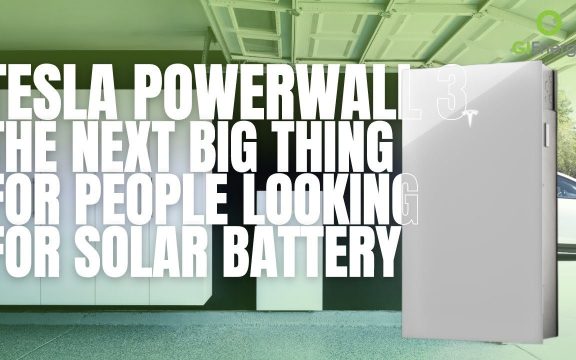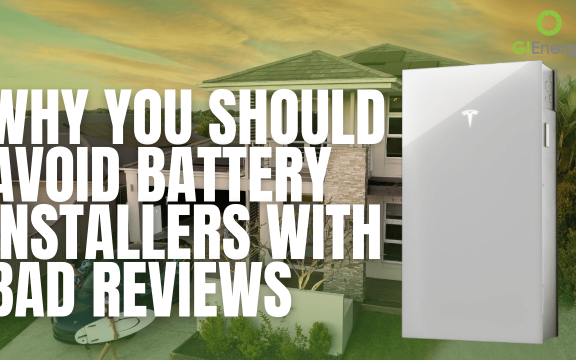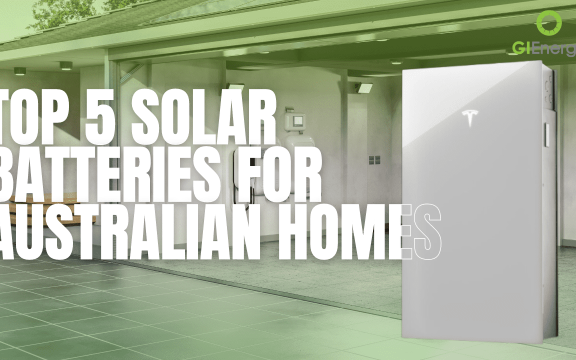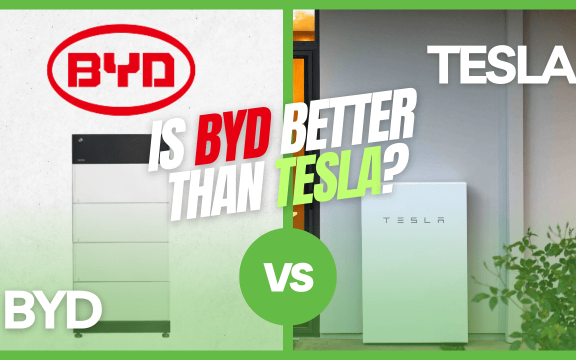What Size Solar Battery Do I Need?
Quick Answer:
What size solar battery do you need? The right solar battery size depends on your daily energy usage, solar system size, lifestyle (e.g., air conditioning, EV charging), and future needs. For most Australian households, a battery between 16-24 kWh is common, but some homes require 24–48 kWh for complete independence and backup security.
Why Battery Sizing Matters
The new federal battery rebate makes batteries way more affordable than ever before, but you can only claim it once. This means sizing it is more crucial than ever as if you need to upgrade in the future, you will not be able to claim the rebate for the upgrade. Not all batteries are created equal — and not one size fits all. Too small, and you’ll still rely heavily on the grid. Too big, and you risk paying for unused storage. At GI Energy, we design every system around how you actually live: your power habits, your future plans, and your appetite for energy independence.
Factors That Determine the Right Solar Battery Size

Choosing the right size solar battery isn’t about guessing — it’s about asking the right questions:
-
Daily Energy Consumption: How many kWh do you use per day? (Check your electricity bills or smart meter.)
-
Timing of Usage: Do you use most energy at night (e.g., cooking, heating, EV charging) or during the day?
-
Lifestyle & Appliances: Air conditioning, pool pumps, underfloor heating, EVs, and large families all push up demand.
-
Solar System Size: A larger PV array can fill a bigger battery more consistently.
-
Future-Proofing: Are you planning for an EV, pool, or growing household?
-
Backup Power Needs: Do you want to keep essentials — or your whole house — running during blackouts?
-
Budget & Rebates: State subsidies, the federal STC scheme, and Virtual Power Plant (VPP) opportunities all impact ROI.
What Size Solar Battery Is Typical Battery for Australian Homes
Here’s a practical guide to what size solar battery suits different households.
| Scenario | Typical Usage | Recommended Battery Size | Notes |
|---|---|---|---|
| Small bills ($125–$150/month) | ~10–12 kWh/day | 10–16 kWh | Best for topping up evening use. |
| Medium bills ($175–$300/month) | ~15–30 kWh/day | 16–32 kWh | Works well with 6.6kW–13kW solar systems. |
| Large bills ($300+/month) | 30+ kWh/day | 32–50 kWh | Needed for large families, EVs, or all-electric homes. |
Examples Of Real-World Scenarios
The scenarios below are example of real world conditions. However, what size solar battery you need is specific to your unique consumption profile and expectations and should be designed carefully and by a professional.
1. You Already Have Solar, But No Battery And A Small Bill
Lets say you’re feeding 10 kWh/day back into the grid, and still have a bill of around $125 – $150 a month. A 16–24 kWh battery paired with a VPP like Amber Electric will allow you to capture and use that exported energy at night. Then using a tariff like amber provide you can grid charge your battery when needed, to offset the remaining bill and sell some energy back at a higher rate to help pay for the fixed costs on your bill. You could also add more additional solar panels if the roof area allows fort this. This would then provide additional solar energy for extra savings, and also to charge your battery in the event of a power cut.
2. You Have Solar, But Still Large Bills
If your bill is $300+/month, you’ll likely need more panels plus a 32 – 50 kWh battery to cover both daytime and evening loads. With a battery this size, you can really benefit from a VPO like Amber Electric to get rid of the fixed costs on your bill and potentially build up a credit.
3. Starting from Scratch (No Solar Yet)
Lets say you have a $400 monthly bill You would probably aim for as much solar as your roof allows (10–15 kW) plus a 20–40 kWh battery. This balances daytime production with nighttime independence. As with the other options on this list every battery system should be designed carefully and by a professional.
Future-Proofing Your Investment
Think long-term:
-
Plan for Growth: EV charging alone can add 9 kWh/day.
-
Go Modular: Choose batteries like BYD, Sungrow, or Sigenergy that allow expansion.
-
Design for 15+ Years: Have a think about the long term future of energy needs at your home. A solar battery will come with a 10-year warranty and should work long after this. Try to size it accordingly for future use and also considering the battery will deplete in terms of its usable capacity over time.
-
Consider VPP Participation: Virtual Power Plants can help provide a much better return on investment.
For a deeper dive, see our Best Solar Battery in 2025 guide.
FAQs About Solar Battery Sizing
1. What size solar battery do I need for a 5kW solar system?
Most 5kW systems pair well with a 10–13 kWh battery, depending on usage habits.
2. How long will a 10 kWh battery power my home?
For an average household using 8–10 kWh overnight, a 10 kWh battery can typically cover your evening and nighttime needs.
3. Is a bigger battery always better?
Not necessarily — a battery should be designed specifically for your needs by a professional.
4. What’s the most popular solar battery size in Australia?
Currently, 16 – 24 kWh batteries are the most common, though larger families often choose 48+ kWh for full independence.
5. Can I add more battery capacity later?
Yes, if you choose a modular battery system. But you’ll usually miss out on rebates for later additions.
Key Takeaways
-
The right battery size depends on your home, your lifestyle, and your goals.
-
16–24 kWh suits most Australian homes, but heavy users may need 48 kWh+.
-
Future-proofing (EVs, pools, family growth) is crucial to avoid costly upgrades.
-
Always size both solar and battery together for maximum ROI.
About GI Energy
GI Energy is an award-winning Australian solar and battery installation company with over a decade of experience. Known for ethical practices, high-performance systems, and exceptional after-install support, GI Energy is trusted by homeowners, councils, schools, and major businesses nationwide.
Written by Daniel McCabe, founder and strategist at GI Energy. With over 16 years in the energy industry — from procurement to solar and holistic energy management — Daniel is focused on helping Australians take a balanced, long-term approach to their energy needs. His insights combine real-world experience with a strong belief in intelligent, ongoing support — not just one-off solar installs.



